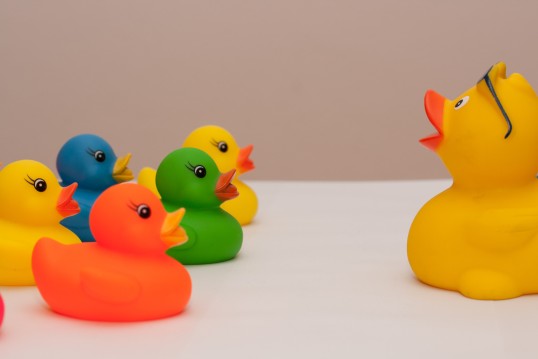- Elektromagnetic Fields
- Indoor workplaces
- Practical Solutions: Ergonomics
- Practical solutions: Hazardous substances
- Practical solutions: Noise
- Practical solutions: Machine safety
- Practical solutions: Personal Protective Equipment
Phthalates

Children's toys made of plastic
Source: 77SG, fotolia
Phthalates continue to be manufactured on a large scale. Around one million tonnes are currently produced every year in Western Europe, roughly 90% of which is used for plasticizing in polyvinyl chloride (PVC) production. Indoor applications include plastic floor coverings, additives including additives in building materials such as concrete, coatings or sealants and in condensers, wallpapers and textiles. As phthalates can be used as solubilising agents, they can also be found in paints, varnishes, adhesives, cosmetics and personal care products.
Due to their hormonal properties and toxicity to reproduction, phthalate plasticisers in dust in nurseries can be a particular problem. The average phthalate level in such dust is more than three times higher than that of dust in homes. The main sources are furnishings made of soft PVC - for instance, PVC floors, vinyl wallpaper, gym mats, plastic tablecloths or imitation leather upholstery. By contrast, there has long been a ban, for example, on the use of phthalates in children’s toys, which used to be common.
The German Umweltbundesamt has recommended nurseries not to buy soft PVC products so as to reduce phthalate levels. Instead, nurseries and parents should opt for products that do not contain any of the plasticisers listed as being "of high concern". Retailers and distributors must provide consumers with the relevant information on request. Parents and nurseries should take advantage of this right.
For download

Contact
Hazardous substances: handling, protective measures
Tel: +49 30 13001-3320Fax: +49 30 13001-38001
